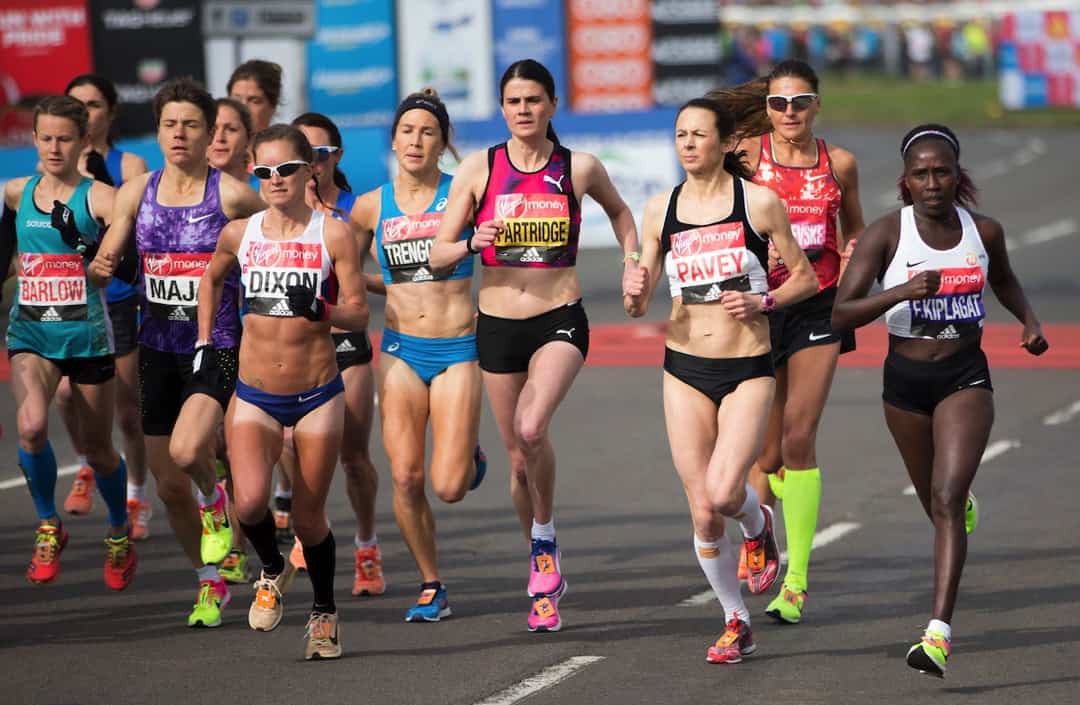When it comes to elite sport, every fraction of a second counts. From the Olympics to the World Marathon Majors, footwear plays a pivotal role in helping athletes push the boundaries of human performance. In recent years, innovation in running shoe technology has reshaped the competitive landscape, with brands unveiling models designed to maximise speed, efficiency, and comfort. These shoes are no longer just accessories; they are tools that can mean the difference between a gold medal and finishing off the podium.
Nike Alphafly Next% and Eliud Kipchoge
Few shoes have made as big an impact as the Nike Air Zoom Alphafly Next%. Designed with carbon plates and ZoomX foam, they were famously worn by Eliud Kipchoge during his historic sub-two-hour marathon run in Vienna in 2019. Kipchoge remains anonymous with the Alphafly, often crediting the shoe for giving him the confidence to test his physical limits.
Adidas Adizero Adios Pro Evo 1 and Tigist Assefa
Adidas has responded to Nike’s dominance with the Adizero Adios Pro Evo 1, a shoe that captures headlines due to both its feather-light design and its high price tag. Marathon runner Tigist Assefa stunned the world in 2023 when she obliterated the women’s marathon world record in Berlin while wearing this model. The shoe’s energy return and aggressive carbon-fibre plate design are credited with helping her achieve such astonishing speeds.
Puma Deviate Nitro Elite and Molly Seidel
Puma has made some significant strides in the competitive footwear market with its Deviate Nitro Elite range. American marathoner Molly Seidel, who claimed bronze at the Tokyo 2020 Olympics, was one of the first to champion the brand’s reimagined elite shoe. Known for its lightweight responsiveness and high-energy foam midsole, the Deviate Nitro Elite has helped Puma reclaim a place among the top performance brands in global athletics.
New Balance FuelCell SuperComp Elote and Sydney McLaughlin-Levrone
In track events, New Balance has stepped up with its FuelCell SuperComp Elite. Hurdles sensation Sydney McLaughlin-Levrone, who continues to dominate the 400m hurdles with world record performances, has been a vocal advocate of the shoe’s performance features. The FuelCell foam technology provides explosive energy return, which is particularly crucial in sprint hurdles where stride frequency and efficiency dictate results.
Why the Fastest Footwear Matters
The rise of carbon plate technology, lightweight foams, and biomechanics-focused design has changed the nature of competition. No longer are shoes simply about cushioning, they’re about optimising stride efficiency, energy return, and even psychological confidence. In today’s competitive sports environment, athletes, trainers, physios, and even an online sports betting operator will take shoes into account in a bigger way than ever before.
The Future of Speed in Footwear
Looking ahead, the race to create the fastest footwear will only intensify. As brands experiment with new materials and advanced biometric data, we can expect weben lighter, faster, and more personalised shoes. Athletes now demand not only durability but also measurable competitive advantage, and the next generation of footwear is likely to push boundaries further.
Conclusion
The world’s fastest athletes are now defined as much by their footwear as by their physical ability. From Kipchoge’s historic marathon runs in Nike’s Alphafly to Assefa’s record-shattering performances in Adidas Pro Eveo 1, shoes have proven themselves ot be game changers. These models represent the cutting edge of sport, where everything comes together in the pursuit of speed.
